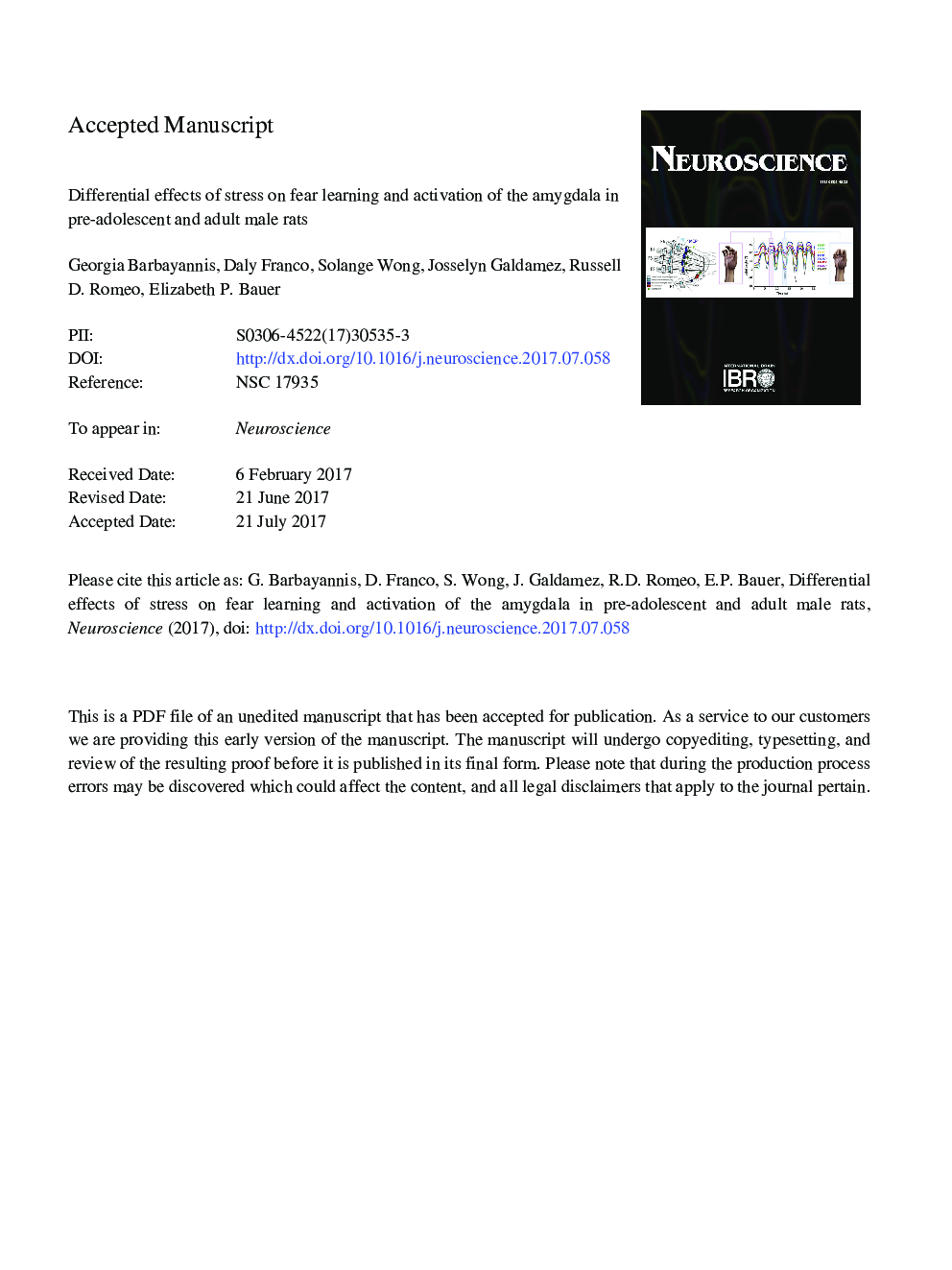| Article ID | Journal | Published Year | Pages | File Type |
|---|---|---|---|---|
| 5737486 | Neuroscience | 2017 | 30 Pages |
Abstract
Adolescence is accompanied by the maturation of several stress-responsive areas of the brain including the amygdala, a key region for the acquisition and expression of conditioned fear. These changes may contribute to the development of stress-related disorders in adolescence, such as anxiety and depression, and increase the susceptibility to these psychopathologies later in life. Here, we assessed the effects of acute restraint stress on fear learning and amygdala activation in pre-adolescent and adult male rats. Pre-adolescents exposed to stress prior to fear conditioning showed greater resistance to the extinction of fear memories than adults. At the cellular level, the combination of stress and fear conditioning resulted in a greater number of FOS-positive cells in the basolateral nucleus of the amygdala (BLA) than fear conditioning alone, and this increase was greater in pre-adolescents than in adults. Despite age-dependent differences, we found no changes in glucocorticoid receptor (GR) levels in the amygdala of either pre-adolescent or adult males. Overall, our data indicate that stress prior to fear conditioning leads to extinction-resistant fear responses in pre-adolescent animals, and that the BLA may be one neural locus mediating these age-dependent effects of stress on fear learning.
Related Topics
Life Sciences
Neuroscience
Neuroscience (General)
Authors
Georgia Barbayannis, Daly Franco, Solange Wong, Josselyn Galdamez, Russell D. Romeo, Elizabeth P. Bauer,
